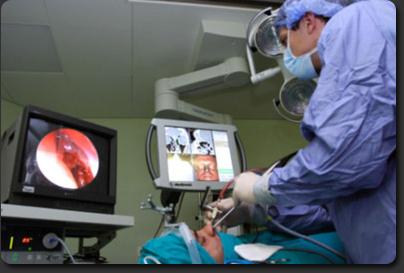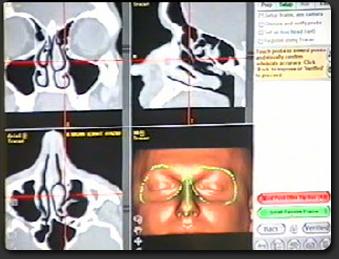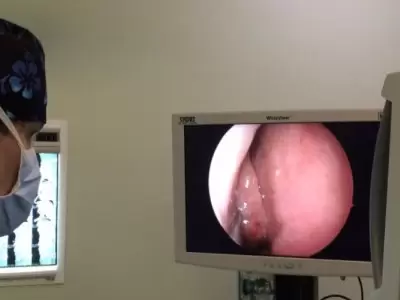Surgical Navigation
What is Surgical Navigation?
Serious complications have started to be observed following the widespread usage of endoscopic sinus surgeries (ESS) that has been introduced in 1984 for the first time. Since the majority of the encountered problems are determined to be the result of not evaluating the anatomy during the surgery due to various reasons led to the emergence of the need for surgical navigation in ESS.
Following the first trials that have been performed in the field of brain surgery , computer aided surgery (surgical navigation) applications has been developed to be used in ESS since 1990 (Figure. 1).

(Figure.1)
During the surgical navigation, the locations of the surgical equipment that are being used in endoscopic sinus surgery are monitored with the help of a special device and a software in real time with aa around 1 mm margin of error inside the sinus anatomy and in three planes on the monitor, representing the three dimensions ( Figure 2).

(Figure.2)
The purpose in the application of surgical navigation is making a connection between the computed tomography (CT) images of the patient obtained before the surgery and the anatomy of the site of surgery and following the surgical devices in the complex anatomy of the sinuses. With this technology, the location of the critical structures and organs are determined easily and with a minor margin of error, and the present disease can be completely cleaned without damaging the critical neighbor structures or organs.
What are the Main Advantages of Surgical Navigation?
The main advantages of using surgical navigation in endoscopic sinus surgery especially in selected cases are as follows.
Providing three dimensional roadmap in two dimensional endoscopic image,
Providing a reliable approach to anatomical regions that are hard to reach,
Performing accurate surgery with less trauma,
Shortening of the duration of the operation,
Decreasing the probability of complication to the highest degree
Increasing the success rate of the operation
Decreasing the probability of recurrence.
What are the Main Indications for Using Surgical Navigation in ESS?
Surgical navigation, which has been used in the most standard endoscopic surgery cases especially yields critical success in these special situations;
In the operations of the patients with congenital anatomic malformations,
In patients with corrupted anatomy due to previous operations or trauma,
In the diseases of frontal sinus, posterior ethmoid and sphenoid sinuses,
In fungal sinusitis,
In patients with widespread big polyps,
In interventions of the skull base,
In the operations of the tumors found in the sinuses and the skull base
In operations related to the eye socket,
In the repairing of cerebrospinal fluid leakages,
since it specifically increases the success rate and decreases the risk of complications.






Comment
Your Contact Information will not be shared in any way. * Required Fields